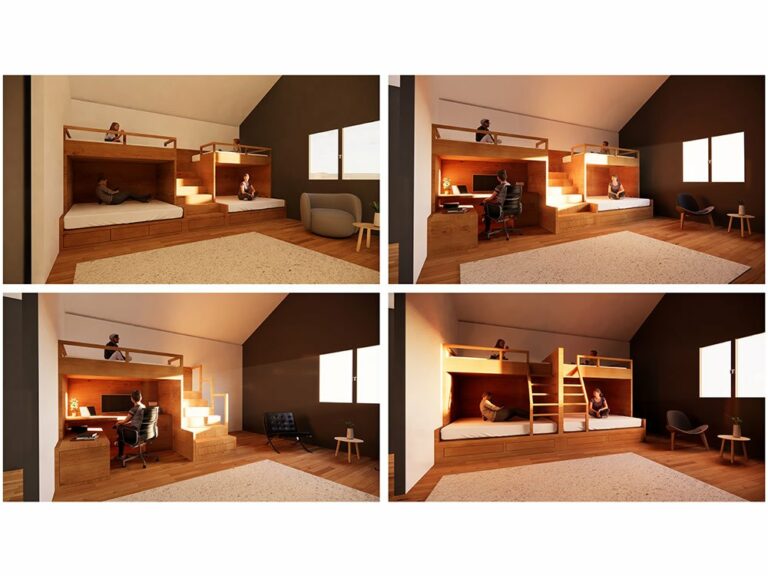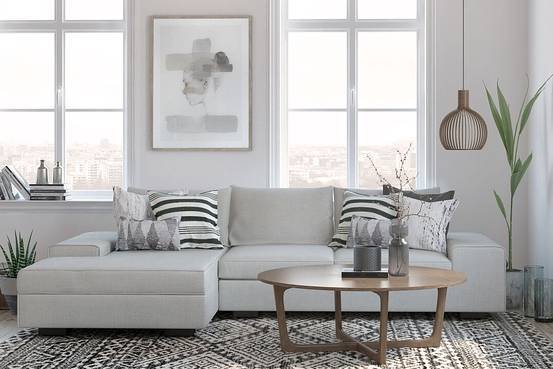Using Eco-Friendly Furniture In Commercial Retail Spaces
Can eco-friendly furniture be used in commercial retail spaces? Yes, it certainly can! With sustainability becoming an increasingly important consideration for businesses, eco-friendly furniture offers a practical and responsible solution.
Not only does it contribute to a greener planet, but it also adds a unique aesthetic appeal to retail spaces, attracting environmentally conscious customers. By incorporating eco-friendly furniture, businesses can demonstrate their commitment to sustainability and create an inviting atmosphere that aligns with their values. Let’s delve deeper into the benefits and possibilities of incorporating eco-friendly furniture into commercial retail spaces.
Can eco-friendly furniture be used in commercial retail spaces?
Recently, there has been a growing focus on sustainability and eco-friendliness across various industries, including commercial retail spaces. Business owners and designers are now considering using eco-friendly furniture to reduce the environmental impact of their establishments.
Eco-friendly furniture aims to minimize harm to the planet throughout its lifecycle, from manufacturing to disposal, while offering functional and attractive designs.
This article will discuss the feasibility of incorporating eco-friendly furniture in commercial retail spaces. We will examine the advantages, obstacles, and factors to consider when opting for eco-friendly furniture in these environments. Let’s get started!
The benefits of eco-friendly furniture in commercial retail spaces
When it comes to commercial retail spaces, incorporating eco-friendly furniture can bring forth a range of benefits. Here are some key advantages:
Sustainability:
Eco-friendly furniture typically uses sustainable materials such as reclaimed wood, bamboo, or recycled plastics. By opting for these materials, retailers can reduce their carbon footprint and contribute to the preservation of natural resources.
Positive brand image:
Embracing sustainability can help retail businesses enhance their brand image. Consumers are becoming increasingly conscious of the environmental impact of their purchasing decisions.
By showcasing eco-friendly furniture in their spaces, retailers can attract environmentally conscious customers and differentiate themselves from competitors.
Healthier indoor environment:
Eco-friendly furniture often incorporates non-toxic materials and finishes, making it safer for both customers and employees.
Conventional furniture may release harmful chemicals into the air, contributing to poor indoor air quality. By choosing eco-friendly alternatives, retailers can create a healthier environment for everyone.
Durability and longevity:
High-quality eco-friendly furniture is built to last. It is designed with durability in mind, ensuring that it can withstand the demands of a commercial retail environment. Investing in durable furniture reduces the need for frequent replacements, resulting in long-term cost savings.
Aesthetically appealing designs:
Eco-friendly furniture offers a wide range of stylish designs that can enhance the visual appeal of a retail space.
Contrary to the perception that environmentally friendly options are limited in style, eco-friendly furniture manufacturers now provide an extensive selection of aesthetically pleasing designs to suit various retail themes.
Challenges and considerations:
While the benefits of eco-friendly furniture are appealing, there are also challenges and considerations that retailers must take into account. Let’s explore some of these factors:
Cost
In some cases, eco-friendly furniture may come with a higher price tag compared to conventional options. The use of sustainable materials and manufacturing processes may increase production costs.
However, it’s important to weigh this against the long-term benefits and cost savings that eco-friendly furniture can offer. Additionally, as sustainability becomes more mainstream, costs are likely to decrease over time.
Supply chain transparency:
When sourcing eco-friendly furniture, it’s crucial to verify the sustainability claims made by manufacturers. Retailers should prioritize working with suppliers who can provide clear information about the materials used, manufacturing processes, and certifications obtained. This ensures that the furniture truly meets eco-friendly standards.
Functional requirements:
Retail spaces have unique functional requirements, such as shelving, display units, and storage solutions. It’s essential to carefully assess whether eco-friendly furniture options can meet these specific needs. Retailers should consider factors like weight capacity, durability, and adaptability to ensure that the furniture can serve its intended purpose effectively.
Flexibility for future changes:
Retail spaces often transform to reflect changing trends or accommodate evolving business needs. It’s important to choose eco-friendly furniture that can adapt to these changes. Modular and versatile designs can provide the flexibility required to rearrange or repurpose furniture as needed, reducing the need for additional purchases.
Implementing eco-friendly furniture in commercial retail spaces
To successfully incorporate eco-friendly furniture into commercial retail spaces, retailers should consider the following steps:
Define sustainability goals:
Retailers should clearly define their sustainability goals and how eco-friendly furniture aligns with them. This includes considering factors such as material preferences, certifications, and desired environmental impact. Having a well-defined vision will facilitate the decision-making process when selecting furniture options.
Research and choose reputable suppliers:
Thorough research is essential when selecting suppliers for eco-friendly furniture. Look for well-established manufacturers with a proven track record of sustainability. Verify their certifications and inquire about their production processes to ensure alignment with your sustainability goals.
Assess functional requirements:
Determine the specific functional requirements of the retail space. Assess the need for display units, seating, storage, or custom furniture. Consider the space layout, design theme, and customer flow to select furniture that enhances the overall shopping experience while meeting sustainability goals.
Budget planning:
Plan and allocate a suitable budget for eco-friendly furniture. Consider not only the upfront costs but also the long-term advantages and savings. Remember that investing in quality furniture will pay off in terms of durability and reduced maintenance or replacement expenses.
Communicate sustainability efforts:
Once eco-friendly furniture is implemented in the retail space, communicate these sustainability efforts to customers. Display information about the furniture’s materials, certifications, and the broader environmental initiatives of the business. This will create transparency and help customers make informed choices while boosting your brand’s eco-friendly image.
Maintain and care for the furniture:
Proper maintenance and care are crucial to extend the lifespan of eco-friendly furniture. Follow the manufacturer’s recommendations for cleaning and maintenance to ensure optimal performance and appearance. Regularly inspect the furniture for any damage or signs of wear and address issues promptly to prevent further deterioration.
Faqs for Eco-Friendly Furniture In Commercial Retail Spaces:
Using eco-friendly furniture in commercial retail spaces offers several benefits. Firstly, it demonstrates the company’s commitment to sustainability, which can enhance its reputation and attract environmentally conscious customers.
Absolutely. Eco-friendly furniture for commercial retail spaces comes in a wide variety of design and style options. Manufacturers now offer a range of aesthetically pleasing and on-trend furniture designs made from sustainable materials.
Whether you are looking for sleek and modern pieces or more traditional and rustic styles, there are numerous choices available that align with your preferred design aesthetic while still maintaining environmental responsibility.
Eco-friendly furniture promotes a healthier indoor environment in commercial retail spaces in several ways. Firstly, these furniture options often use low-emission or non-toxic materials, reducing the amount of harmful chemicals released into the air. This helps to improve the overall indoor air quality, creating a healthier and more comfortable atmosphere for employees and customers alike.
Yes, using eco-friendly furniture in commercial retail spaces aligns with various sustainability certifications and standards. For example, furniture made from certified sustainable wood sources can adhere to Forest Stewardship Council (FSC) guidelines. Additionally, some furniture manufacturers may have specific certifications, such as Greenguard Certification, which ensures low levels of indoor air pollutants. By choosing eco-friendly furniture, businesses can demonstrate their commitment to meeting these certifications and standards, further solidifying their sustainable practices.
Final Thoughts
In conclusion, eco-friendly furniture has great potential to be used in commercial retail spaces. Not only does it align with the growing demand for sustainable practices, but it also offers numerous benefits such as improved indoor air quality and reduced carbon footprint. By incorporating eco-friendly furniture, businesses can create a more environmentally conscious image and attract eco-conscious consumers. Additionally, with advancements in design and material options, eco-friendly furniture can now seamlessly integrate into any retail space without compromising aesthetics or functionality. Therefore, commercial retail spaces should seriously consider embracing eco-friendly furniture as it can contribute to both environmental preservation and business success. Can eco-friendly furniture be used in commercial retail spaces? Absolutely.

